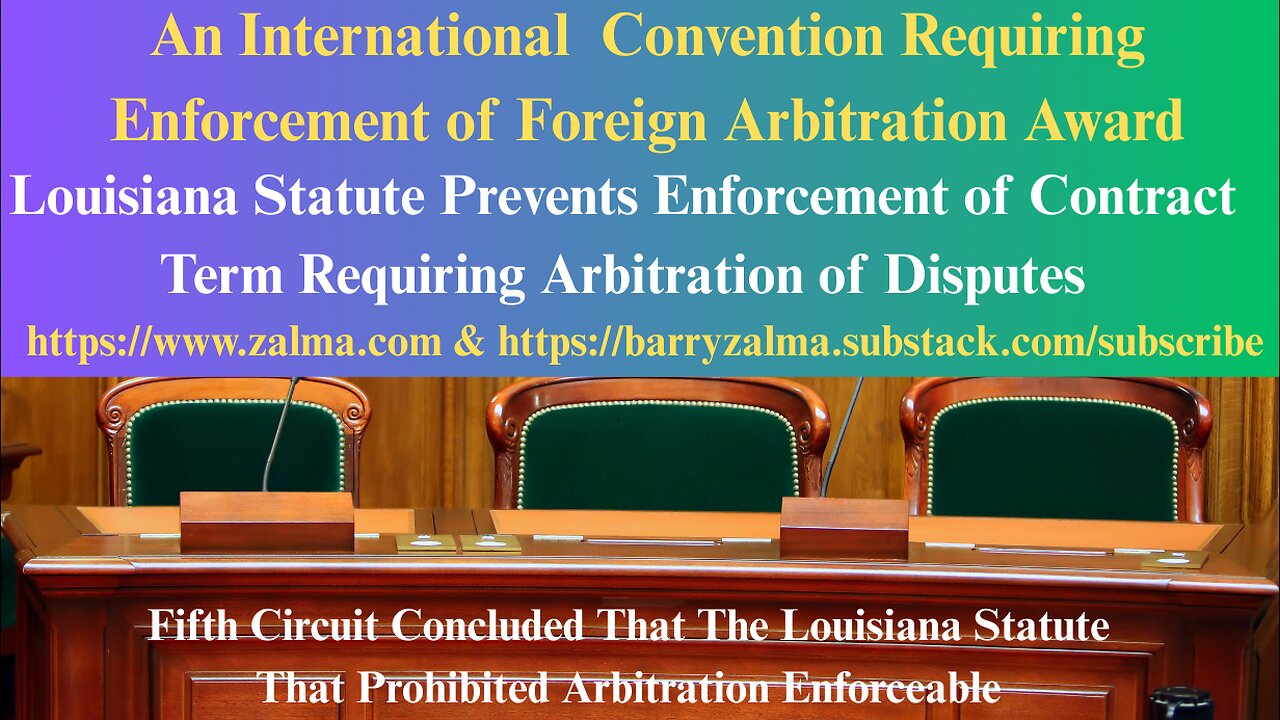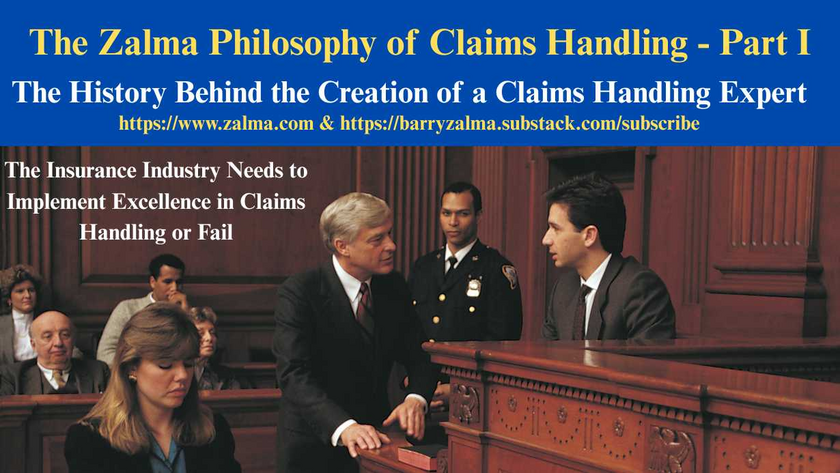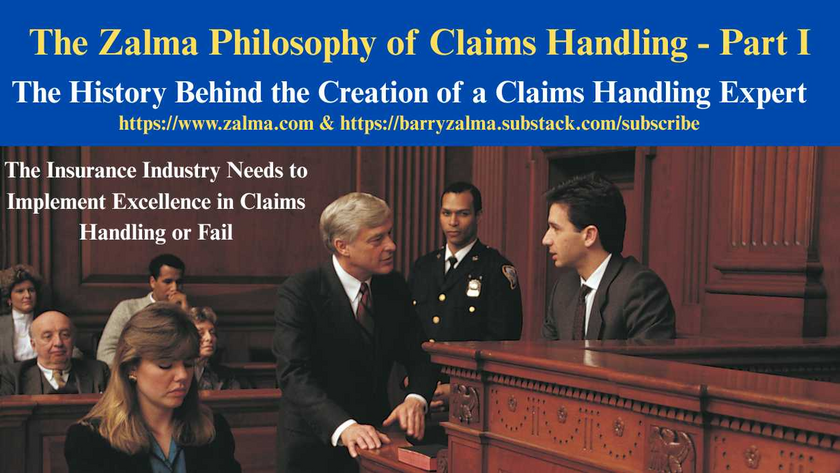
The Most Effective Tool Available to Insurers to Defeat Attempts at Insurance Fraud & to Resolve Questionable Claims
Read the full article at https://lnkd.in/gw6iRtxe and at https://zalma.com/blog plus more than 4150 posts.
Posted on April 6, 2022 by Barry Zalma
A Tool Available to Insurers to Thoroughly Investigate Claims and Work to Defeat Fraud
The insurance Examination Under Oath (“EUO”) is a condition precedent to indemnity under a first party property insurance policy that allows an insurer to compel an insured to submit to questioning from a representative of the insurer under oath. It is a formal type of interview authorized by an insurance contract. The EUO is taken under the authority provided by the agreement of the insured when he, she or it acquires a policy of insurance, to submit to the requirement of the insurer that the insured appear and give sworn. Failure to appear and testify is considered a breach of a material condition that can cause the insured to lose the right to indemnity.
The EUO is conducted before a notary and a certified shorthand reporter. The reporter is present to give the oath to the person interviewed and record the entire conversation and prepare a transcript, in question and answer format, to be read, reviewed, corrected and signed by the witness under penalty of perjury or by an oath taken before a notary or judge.
The EUO is a tool sparingly used by insurers in the United States. A professional insurer will only require an insured to submit to an EUO when a thorough claims investigation raises questions:
1. about the application of the coverage to the facts of the loss,
2. the potentiality that a fraud is being attempted, or
3. to assist the insured in the obligation to prove to the insurer the cause and amount of loss.
Although seldom used the EUO is an important tool needed by insurers when there is a question of coverage, destruction of evidence needed to prove a compensable loss or the amount of loss or evidence indicating the potential that a fraud is being attempted.
The Reason for the Examination Under Oath
In 1884, the U.S. Supreme Court explained the purpose of the EUO, as follows:
“The object of the provisions in the policies of insurance, requiring the assured to submit himself to an EUO, to be reduced to writing, was to enable the company to possess itself of all knowledge, and all information as to other sources and means of knowledge, in regard to the facts, material to their rights, to enable them to decide upon their obligations, and to protect them against false claims. And every interrogatory that was relevant and pertinent in such an examination was material, in the sense that a true answer to it was of the substance of the obligation of the assured. A false answer as to any matter of fact material to the inquiry, would be fraudulent. If it made, with intent to deceive the insurer, would be fraudulent. If it accomplished its result, it would be a fraud effected; if it failed it would be a fraud attempted. And if the matter were material and the statement false, to the knowledge of the party making it, and willfully made, the intention to deceive the insurer would be necessarily implied, for the law presumes every man to intend the natural consequences of his acts. No one can be permitted to say, in respect to his own statements upon a material matter, that he did not expect to be believed; and if they are knowingly false and willfully made, the fact that they are material is proof of an attempted fraud, because their materiality, in the eye of the law, consists in their tendency to influence the conduct of the party who has an interest in them, and to whom they are addressed.” [Claflin v. Commonwealth Ins. Co., 110 U.S. 81, 3 S.Ct. 507, 28 L.Ed. 76 (1884)] (Emphasis added)
Available as a Kindle book Available as a paperback. Available as a hardcover.
(c) 2022 Barry Zalma & ClaimSchool, Inc.
Barry Zalma, Esq., CFE, now limits his practice to service as an insurance consultant specializing in insurance coverage, insurance claims handling, insurance bad faith and insurance fraud almost equally for insurers and policyholders. He practiced law in California for more than 44 years as an insurance coverage and claims handling lawyer and more than 54 years in the insurance business. He is available at http://www.zalma.com and [email protected].
Subscribe to Zalma on Insurance at locals.com https://zalmaoninsurance.local.com/subscribe.
Subscribe to Excellence in Claims Handling at https://barryzalma.substack.com/welcome.
Write to Mr. Zalma at [email protected]; http://www.zalma.com; http://zalma.com/blog; daily articles are published at https://zalma.substack.com.
Go to the podcast Zalma On Insurance at https://anchor.fm/barry-zalma; Follow Mr. Zalma on Twitter at https://twitter.com/bzalma; Go to Barry Zalma videos at Rumble.com at https://rumble.com/c/c-262921; Go to Barry Zalma on YouTube- https://www.youtube.com/channel/UCysiZklEtxZsSF9DfC0Expg; Go to the Insurance Claims Library – https://zalma.com/blog/insurance-claims-library/
Detail Charging Defendant for Fraud is Sufficient
Post 5242
Read the full article at https://lnkd.in/g_HVw36q, see the video at https://lnkd.in/gpBd-XTg and at https://lnkd.in/gzCnBjgQ and at https://zalma.com/blog plus more than 5200 posts.
Charges that Advises the Defendant of the Crime Cannot be Set Aside
In United States Of America v. Lourdes Navarro, AKA Lulu, No. 25-661, United States Court of Appeals, Ninth Circuit (December 4, 2025) Lourdes Navarro appealed the district court’s denial of her motion to dismiss the indictment and enter final judgment was in error.
FACTUAL BACKGROUND
The indictment alleged that insurers reimburse only for medically necessary services. Navarro performed unnecessary respiratory pathogen panel (RPP) tests on nasal swabs collected from asymptomatic individuals for COVID-19 screening.
Navarro billed over $455 million to insurers for those additional RPP tests that she knew to be medically unnecessary. These allegations constituted a plain, concise, and definite written ...
Louisiana Statute Prevents Enforcement of Contract Term Requiring Arbitration of Disputes
Post 5241
Read the full article at https://www.linkedin.com/pulse/international-convention-requiring-enforcement-award-barry-sttdc, see the video at and at and at https://zalma.com/blog plus more than 5200 posts.
In Town of Vinton v. Indian Harbor Insurance Company, Nos. 24-30035, 24-30748, 24-30749, 24-30750, 24-30751, 24-30756, 24-30757, United States Court of Appeals, Fifth Circuit (December 8, 2025) municipal entities including the Town of Vinton, et al sued domestic insurers after dismissing foreign insurers with prejudice. The insurers sought arbitration under the Convention on the Recognition and Enforcement of Foreign Arbitral Awards (the “Convention”) but the court held Louisiana law — prohibiting arbitration clauses in such policies—controls, as the Convention does not apply absent foreign parties who ...

Refusal to Provide Workers’ Compensation is Expensive
Post 5240
Read the full article at https://lnkd.in/guC9dnqA, see the video at https://lnkd.in/gVxz-qmk and at https://lnkd.in/gUTAnCZw, and at https://zalma.com/blog plus more than 5200 posts.
In Illinois Department of Insurance, Insurance Compliance Department v.USA Water And Fire Restoration, Inc., And Nicholas Pacella, Individually And As Officer, Nos. 23WC021808, 18INC00228, No. 25IWCC0467, the Illinois Department of Insurance (Petitioner) initiated an investigation after the Injured Workers’ Benefit Fund (IWBF) was added to a pending workers’ compensation claim. The claim alleged a work-related injury during employment with the Respondents who failed to maintain workers’ compensation Insurance.
Company Overview:
USA Water & Fire Restoration, Inc. was incorporated on January 17, 2014, and dissolved on June 14, 2019, for failure to file annual reports and pay franchise taxes. It then operated under assumed names including USA Board Up & Glass Co. and USA Plumbing and Sewer. The business ...
The Professional Claims Handler
Post 5219
Posted on October 31, 2025 by Barry Zalma
An Insurance claims professionals should be a person who:
Can read and understand the insurance policies issued by the insurer.
Understands the promises made by the policy.
Understand their obligation, as an insurer’s claims staff, to fulfill the promises made.
Are competent investigators.
Have empathy and recognize the difference between empathy and sympathy.
Understand medicine relating to traumatic injuries and are sufficiently versed in tort law to deal with lawyers as equals.
Understand how to repair damage to real and personal property and the value of the repairs or the property.
Understand how to negotiate a fair and reasonable settlement with the insured that is fair and reasonable to both the insured and the insurer.
How to Create Claims Professionals
To avoid fraudulent claims, claims of breach of contract, bad faith, punitive damages, unresolved losses, and to make a profit, insurers ...

The History Behind the Creation of a Claims Handling Expert
The Insurance Industry Needs to Implement Excellence in Claims Handling or Fail
Post 5210
This is a change from my normal blog postings. It is my attempt. in more than one post, to explain the need for professional claims representatives who comply with the basic custom and practice of the insurance industry. This statement of my philosophy on claims handling starts with my history as a claims adjuster, insurance defense and coverage lawyer and insurance claims handling expert.
My Training to be an Insurance Claims Adjuster
When I was discharged from the US Army in 1967 I was hired as an insurance adjuster trainee by a professional and well respected insurance company. The insurer took a chance on me because I had been an Army Intelligence Investigator for my three years in the military and could use that training and experience to be a basis to become a professional insurance adjuster.
I was initially sat at a desk reading a text-book on insurance ...

The History Behind the Creation of a Claims Handling Expert
The Insurance Industry Needs to Implement Excellence in Claims Handling or Fail
Post 5210
This is a change from my normal blog postings. It is my attempt. in more than one post, to explain the need for professional claims representatives who comply with the basic custom and practice of the insurance industry. This statement of my philosophy on claims handling starts with my history as a claims adjuster, insurance defense and coverage lawyer and insurance claims handling expert.
My Training to be an Insurance Claims Adjuster
When I was discharged from the US Army in 1967 I was hired as an insurance adjuster trainee by a professional and well respected insurance company. The insurer took a chance on me because I had been an Army Intelligence Investigator for my three years in the military and could use that training and experience to be a basis to become a professional insurance adjuster.
I was initially sat at a desk reading a text-book on insurance ...














